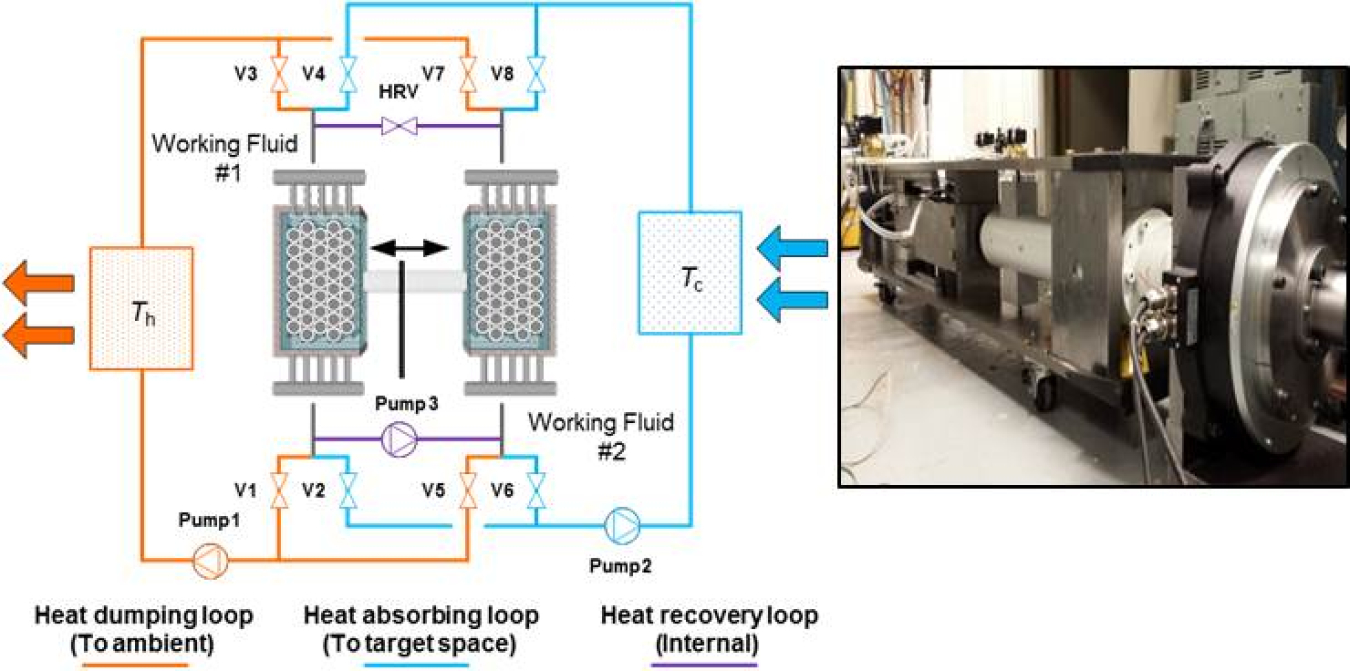Identifying alternatives to vapor-compression technology in residential and commercial HVAC applications.
March 18, 2014
This thermoelastic system provides a promising alternative to traditional vapor-compression HVAC technologies. Read the full report below to learn more.
This Building Technologies Office report:
- Identifies alternatives to vapor-compression technology in residential and commercial HVAC applications
- Characterizes these technologies based on their technical energy savings potential, development status, non-energy benefits, and other factors affecting end-user acceptance and their ability to compete with conventional vapor-compression systems
- Makes specific research, development, and deployment (RD&D) recommendations to support further development of these technologies, should DOE choose to support non-vapor-compression technology further.
View the Full Report

